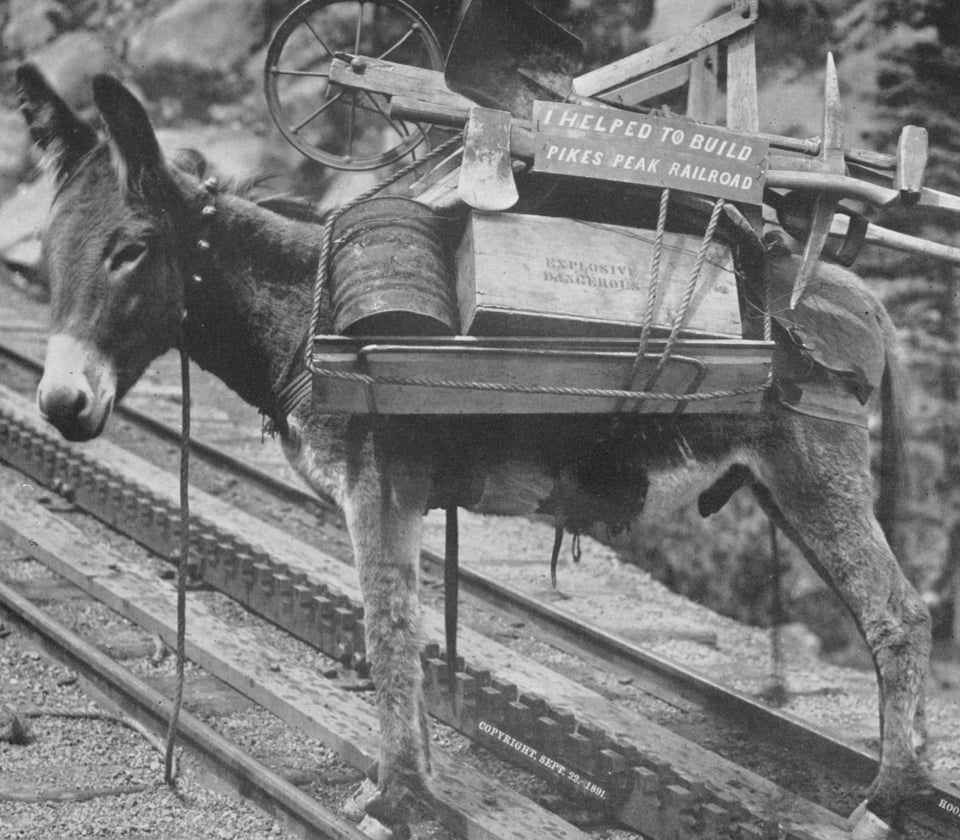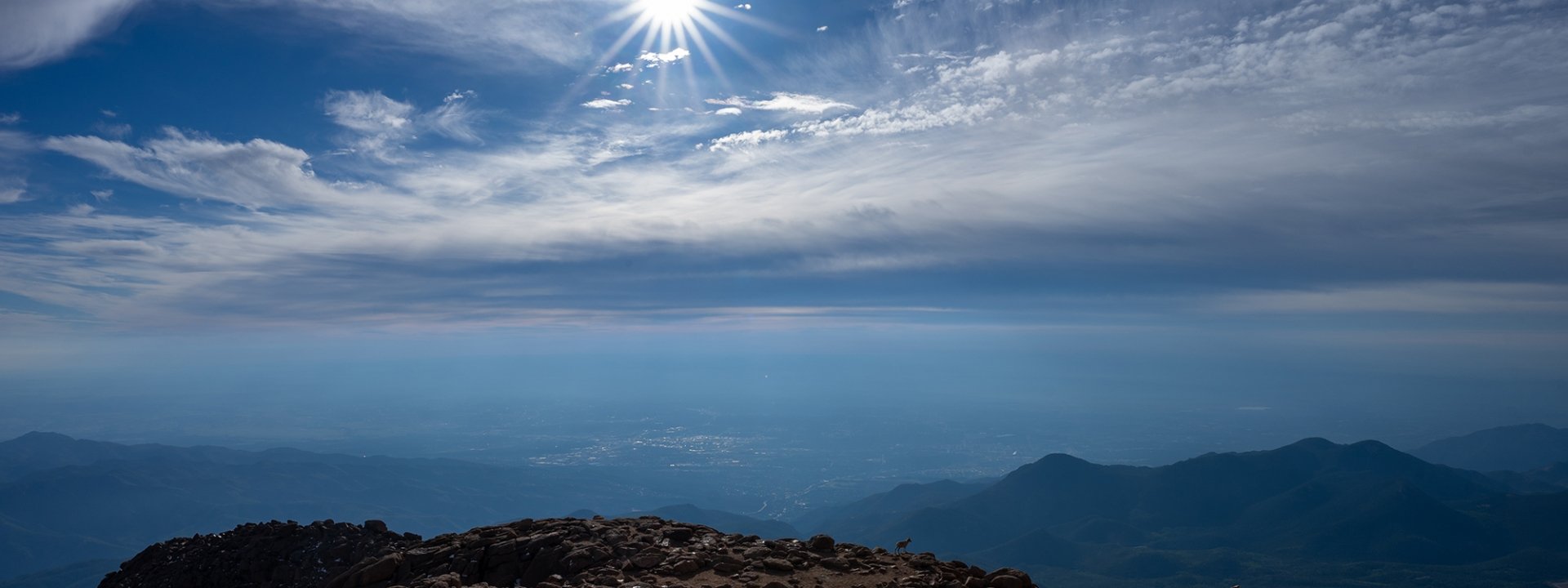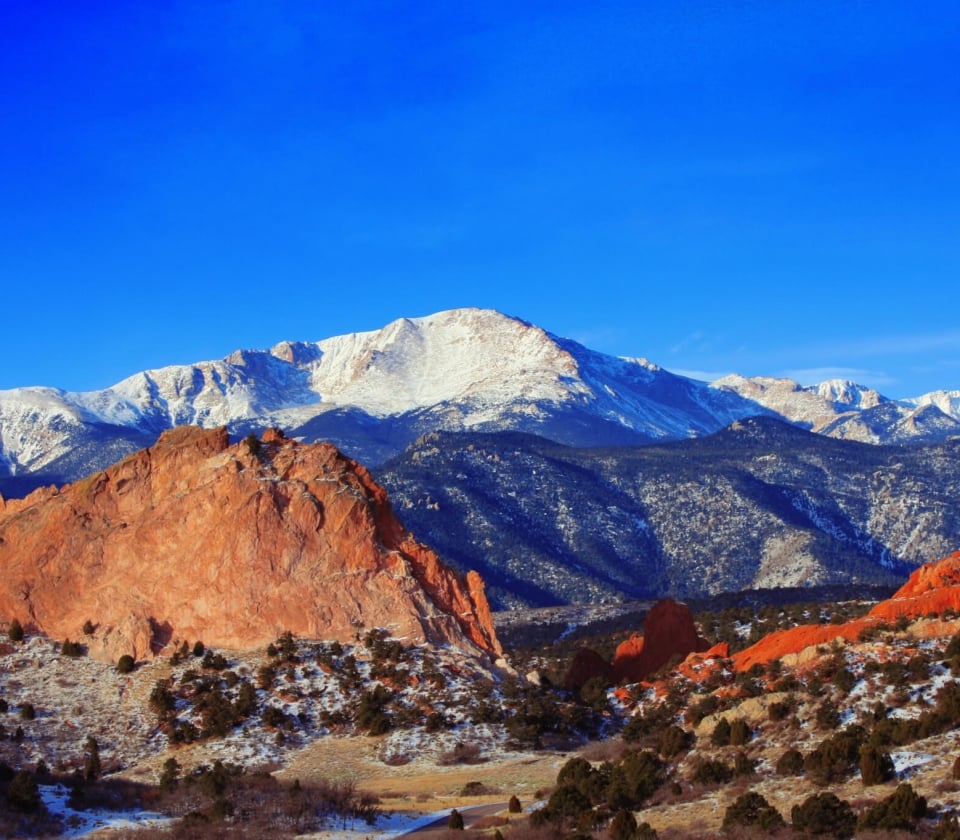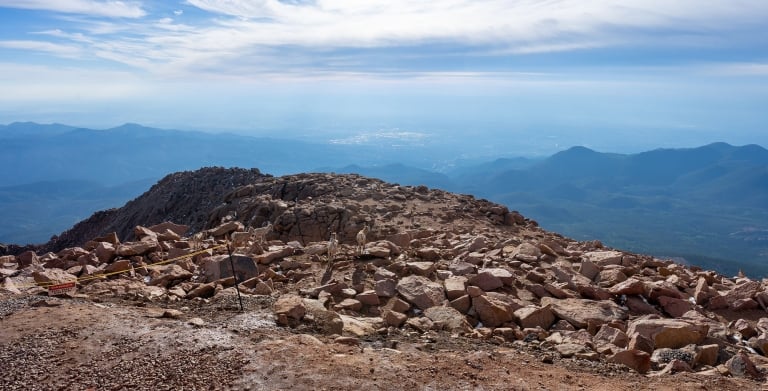Breathtaking National Icon
Imagine what you’ll discover on your 9-mile journey to the top of this 14,115-foot National Historic Landmark. This striking mountain of granite, carved by glaciers over millions of years, was home to the Ute Indians long before anyone explored the region. The Utes called it Ta-Wa-Ah-Gath or “Sun Mountain Sitting Big.” Beautiful scenery surrounds a range of wildlife, from foxes, coyotes, and elk, to bighorn sheep and whistling yellow-bellied marmots above timberline. And then there’s the summit, with its sweeping 360-degree views of the Pikes Peak region, vistas that inspired the song of a nation and natural beauty that has drawn generations of explorers and travelers.
The Great Peak
Pikes Peak was named for Zebulon Montgomery Pike, an early explorer of the Southwest who first sighted what he called “The Great Peak” in November 1806, but was not actually the first to climb it. He attempted to summit the mountain, but heavy snows had other plans for his crew who turned back at about the 10,000-foot mark. It was Edwin James, a botanist who had climbed many peaks in Colorado, who made it to the top in 1820. By the mid-1800s, a trail was well established to the top, and the first woman, Julia Archibald Holmes, climbed the peak in 1858.
An Early Icon
After the Louisiana Purchase, people began traveling and searching for new fortunes and new beginnings. Pikes Peak’s proximity to the edge of the Great Plains, as well as its height, made it the first sight of westward bound wagon trains, making “Pikes Peak or Bust” the motto for gold seekers. In 1873, the U.S. Signal Service (an early Weather Bureau) built a telegraph station on the summit to monitor the weather.






